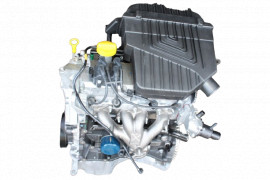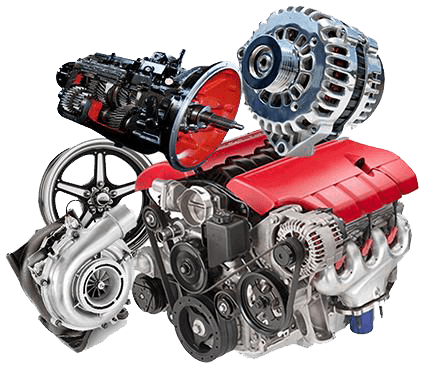Budget-friendly Opel Corsa Engine Options for Your Budget plan
Budget-friendly Opel Corsa Engine Options for Your Budget plan
Blog Article
Checking Out the Inner Functions of a Compact Automobile's Engine System
As motorists, we frequently take for provided the elaborate processes that happen within the boundaries of our car's engine system. In this expedition of a compact automobile's engine system, we will decipher the internal workings of this mechanical symphony, losing light on the mysteries that drive us ahead on our day-to-day journeys.
Burning Refine Overview
The combustion procedure in a compact car's engine system is a critical system that successfully converts fuel into power to power the vehicle. This process happens within the burning chamber of the engine, where fuel and air mix, fire up, and generate regulated explosions. The combustion procedure contains 4 main stages: consumption, exhaust, compression, and power.
Throughout the consumption stage, the piston relocates downward, pulling in a mix of air and gas into the combustion chamber. The following stage, compression, entails the piston relocating upward, pressing the air-fuel mix to raise its strength. Subsequently, in the power phase, the ignition system ignites the pressed mix, causing a fast development of gases that requires the piston back down. This descending movement produces the power needed to drive the lorry. In the exhaust phase, the burnt gases are expelled from the combustion chamber through the exhaust valve, preparing the chamber for the next cycle. This cyclic combustion process is essential to the procedure of a portable vehicle's engine system, ensuring reliable power conversion for propulsion.
Piston and Cylinder Communication

The piston's specific fit within the cylinder is important for preserving ideal compression and avoiding power loss throughout burning. Limited clearances in between the piston and cylinder walls ensure efficient securing, permitting the piston to relocate efficiently without permitting gases to leakage past. Correct lubrication is additionally crucial to minimize friction and use between these components, boosting long life and efficiency.
Moreover, the style and materials used in making the piston and cyndrical tube effect engine effectiveness and longevity. Modern engines commonly utilize lightweight yet durable products like light weight aluminum alloys for pistons and cyndrical tube linings to decrease inertia and boost thermal performance. Overall, the unified interaction in between the piston and cyndrical tube is essential to the engine's capability and general performance.
Gas Injection System Capability
Gas injection systems in portable automobile engines play a crucial duty in specifically delivering gas to the combustion chamber for reliable and controlled ignition. The gas injection system operates by injecting fuel right into the combustion chamber at the optimum moment throughout the engine's operation (opel corsa engine). This specific timing straight from the source guarantees that the fuel mixes evenly with the air for appropriate combustion, bring about enhanced gas effectiveness and reduced discharges
There are primarily two kinds of fuel shot systems used in small vehicle engines: port fuel shot (PFI) and direct gas injection (DFI) PFI systems inject gas right into the intake port prior to the consumption valve, while DFI systems infuse gas directly into the burning chamber. Both systems have their advantages, with DFI using much better gas atomization and PFI providing an extra cost-effective option.
Recognizing Engine Cooling Systems
Reliable procedure of a portable lorry's engine counts heavily on the efficiency of its cooling systems. The cooling system in a compact vehicle generally consists of numerous parts functioning with each other to manage the engine temperature level. Understanding these description engine air conditioning devices is crucial for keeping the performance and longevity of a portable car's engine system.

Exhaust System Components Explained
The optimal functioning of a compact vehicle's engine air conditioning systems depends on a complementary system referred to as the exhaust system, which comprises various essential parts for ensuring efficient exhausts and engine efficiency. The exhaust system consists of elements such as the exhaust manifold, catalytic converter, muffler, and tailpipe. The exhaust manifold accumulates exhaust gases from the read review engine's courses and cylinders them to the catalytic converter. The catalytic converter after that converts harmful contaminants in the exhaust right into less harmful discharges before launching them through the muffler and tailpipe.
One crucial element of the exhaust system is the oxygen sensing unit, which monitors the oxygen levels in the exhaust gases to aid regulate fuel intake and ensure ideal engine efficiency. opel corsa engine. Additionally, the resonator may be existing in some exhaust systems to lower noise levels. Overall, the exhaust system plays an important function in keeping engine efficiency, decreasing unsafe emissions, and guaranteeing a quieter driving experience for portable vehicle owners

Conclusion
In final thought, the small lorry's engine system is a complex combination of elements that function together to assist in the burning procedure, transform fuel into energy, and get rid of waste gases. Recognizing the internal workings of the engine system, including the piston and cylinder interaction, fuel shot system, engine air conditioning devices, and exhaust system parts, is crucial for preserving ideal efficiency and performance of the vehicle.
The combustion process in a compact car's engine system is an important system that successfully transforms gas into energy to power the vehicle.Fuel injection systems in compact vehicle engines play a critical role in precisely delivering gas to the combustion chamber for efficient and regulated ignition.There are mostly 2 kinds of gas shot systems utilized in portable automobile engines: port fuel injection (PFI) and direct gas shot (DFI) Comprehending these engine cooling mechanisms is vital for keeping the efficiency and durability of a small vehicle's engine system.
The optimal performance of a small car's engine cooling devices depends on a corresponding system known as the exhaust system, which makes up various important components for making certain effective emissions and engine efficiency.
Report this page